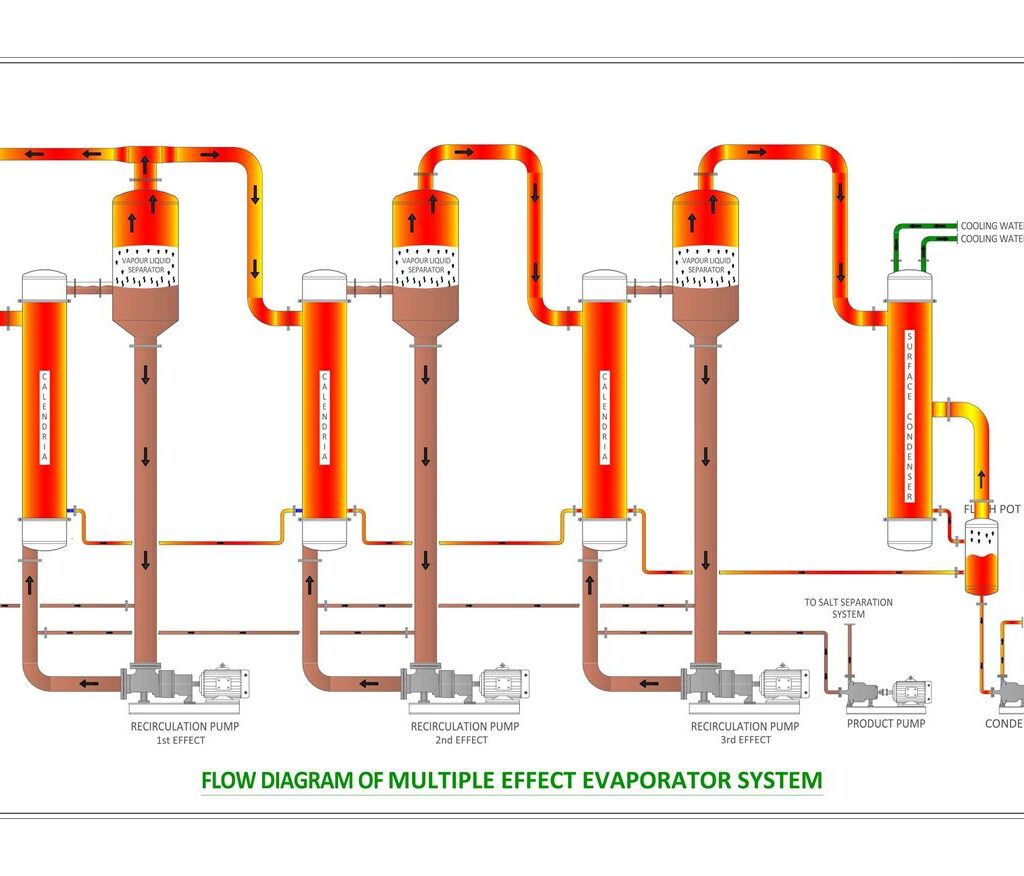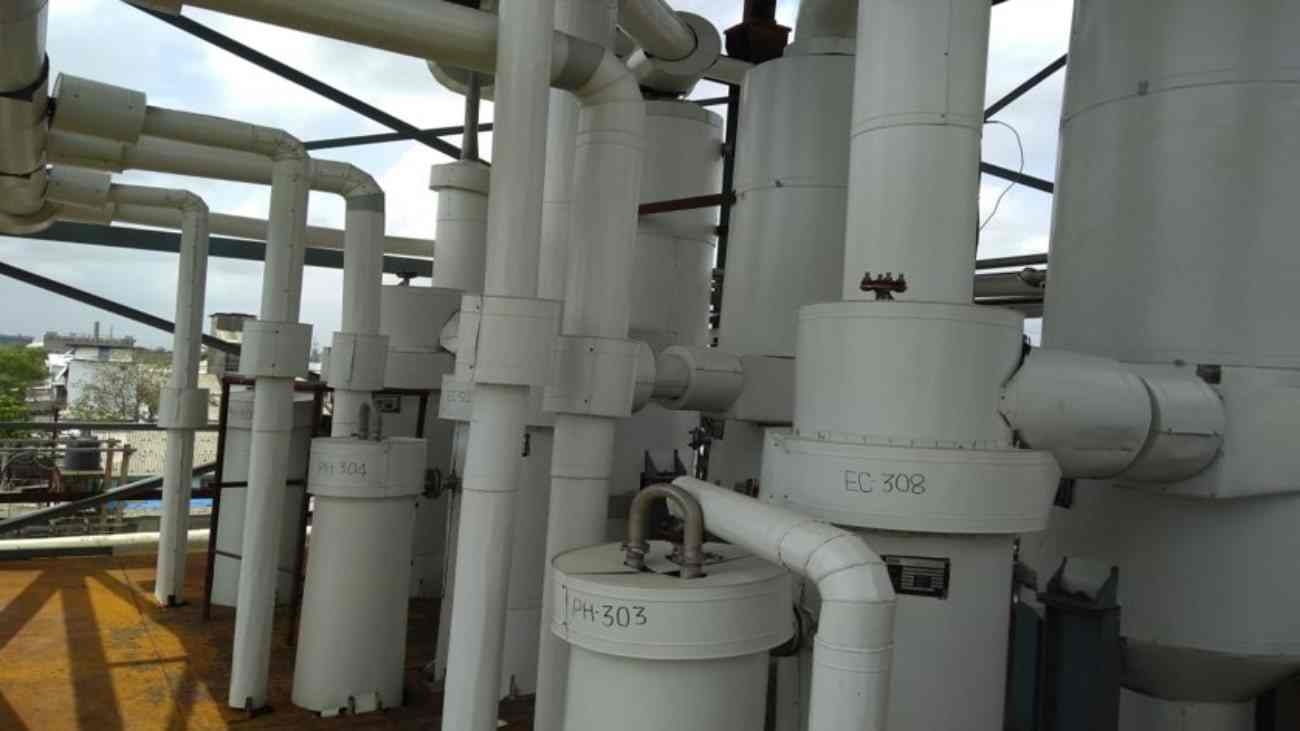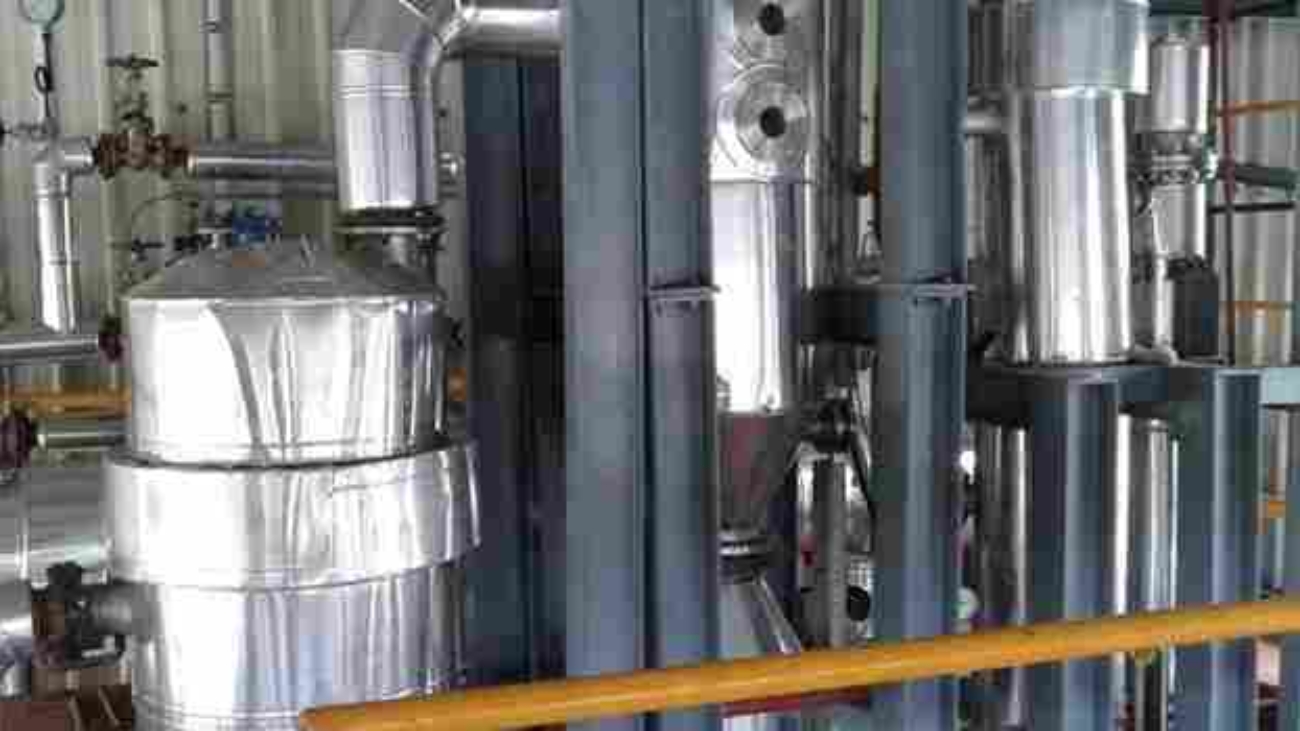In the ever-evolving industrial landscape of India, efficiency and sustainability have become paramount. One technological advancement that has significantly contributed to these goals is the multiple effect evaporator. Specifically, the steam economy of multiple effect evaporator systems plays a critical role in enhancing the efficiency of various industrial processes. Goldfinch Evaporator Systems, a leading name in the industry, has been at the forefront of this innovation, providing cutting-edge solutions to industries across India.
Introduction:
Understanding the steam economy of multiple effect evaporator systems is essential for industries that aim to optimize their energy usage and reduce operational costs. This article explores the principle, construction, working mechanism, benefits, and applications of multiple effect evaporators, with a special focus on their steam economy. By delving into the specifics, we aim to highlight how Goldfinch Evaporator Systems is driving growth and efficiency in the Indian industrial sector.
Principle of Steam Economy in Multiple Effect Evaporator Systems:
The principle behind the steam economy of multiple effect evaporator systems is the reuse of steam across multiple stages or effects to maximize efficiency. In a single effect evaporator, steam is used once to heat the solution, and the resulting vapor is discarded. However, in a multiple effect evaporator, the vapor generated in one stage is used to heat the next stage. This cascading use of steam results in a significant reduction in the overall steam requirement, thereby enhancing the steam economy.
Construction of Multiple Effect Evaporators:
A typical multiple effect evaporator consists of several key components:
- Evaporator Vessels: These vessels are arranged in series, with each successive vessel operating at a lower pressure and temperature.
- Heat Exchangers: These facilitate the transfer of heat from steam to the liquid feed in each stage.
- Condensers: Used to condense the vapor produced in the final effect.
- Vacuum Pumps: Essential for maintaining the required vacuum conditions in the lower pressure stages.
- Interconnecting Piping: A network of pipes that ensures efficient transfer of steam, vapor, and liquid between effects.
The construction of multiple effect evaporators is designed to optimize the steam economy of multiple effect evaporator systems, ensuring maximum heat reuse and minimal energy consumption.
The operation of a multiple effect evaporator involves the following stages:
Working Mechanism of Multiple Effect Evaporators:
- Initial Heating: Steam is introduced into the heat exchanger of the first evaporator vessel, heating the liquid feed and causing it to evaporate.
- Cascade Heating: The vapor generated in the first effect is used as the heating medium for the second effect, which operates at a lower pressure and temperature.
- Subsequent Effects: This process continues through the subsequent effects, with each stage using the vapor from the previous stage to heat the liquid feed.
- Condensation: The vapor from the final effect is condensed, and the condensate is collected for potential reuse within the system.
This cascading use of steam significantly enhances the steam economy of multiple effect evaporator systems, making them far more efficient than single effect evaporators.

A Smart Approach to Efficient Liquid Evaporation:
At Goldfinch Evaporation Systems, we have pioneered a sophisticated and efficient method for liquid evaporation through the use of Multiple Effect Evaporator Systems. Our innovative approach capitalizes on the principles of thermodynamics to optimize energy utilization, minimize resource wastage, and enhance overall process efficiency.
Understanding steam economy of multiple effect evaporator systems:
Imagine the conventional process of boiling water in a single pot on a stove. Now, envision an evolution of this process, where instead of relying on just one pot, we employ a series of interconnected vessels. This is the essence of our Multiple Effect Evaporator System.
In this system, the liquid to be concentrated, be it water, or wastewater, is introduced into the first vessel. Here, the liquid is subjected to heat, typically derived from steam or hot oil. As the liquid heats up, it begins to evaporate, leaving behind the desired concentrated substances, such as salt or sugar.
Harnessing the Power of Steam Economy
Herein lies the brilliance of our system: the steam produced during the evaporation process is not discarded as waste. Instead, it serves a dual purpose, acting as a valuable source of energy to heat the liquid in subsequent vessels. This cascading effect enables us to recycle and reuse the latent heat energy present in the steam, thereby significantly enhancing the overall energy efficiency of the evaporation process.
In traditional single-effect evaporators, the consumption of steam is considerable, typically ranging from 1 to 1.2 kilograms per kilogram of water evaporated. However, with our Multiple Effect Evaporator System, the steam economy is drastically improved.
By strategically channeling and reusing the steam across multiple vessels, we can achieve a remarkable increase in evaporation efficiency. For instance, with just 1 kilogram of steam, our system can effectively evaporate up to 3 kilograms of water when employing three interconnected vessels.
Advantages Beyond Efficiency
The benefits of our system extend far beyond its enhanced steam economy. As the liquid progresses from one vessel to the next, it undergoes a process of continuous concentration. This progressive concentration is particularly advantageous in various industrial applications, such as the production of fruit juices or the treatment of wastewater.
In the realm of fruit juice production, for example, our Multiple Effect Evaporator System allows for precise control over the concentration levels of the juice. By gradually removing water from the solution across multiple stages, we can tailor the final product to meet specific taste preferences and quality standards.
Similarly, in wastewater treatment processes, our system facilitates the efficient removal of contaminants and pollutants. By concentrating the wastewater, we can significantly reduce its volume, making it easier and more cost-effective to treat and dispose of safely.
Environmental Sustainability
In addition to its economic and operational advantages, our Multiple Effect Evaporator System aligns seamlessly with principles of environmental sustainability. By optimizing energy utilization and minimizing resource wastage, we are able to reduce the carbon footprint associated with the evaporation process.
Moreover, our system enables industries to conserve water resources by facilitating the reuse and recycling of treated water. This not only mitigates the strain on freshwater sources but also helps to alleviate environmental pollution by reducing the discharge of contaminated wastewater into natural ecosystems.
The Steam Economy of Multiple Effect Evaporator Systems represents a paradigm shift in the field of liquid evaporation. By harnessing the power of thermodynamics and adopting a holistic approach to energy efficiency, Goldfinch Evaporation Systems has revolutionized the way industries approach concentration processes.
Our innovative system offers a compelling combination of enhanced efficiency, process flexibility, and environmental sustainability. Whether in the production of consumer goods, the treatment of industrial effluents, or the purification of water, our technology stands as a beacon of ingenuity and progress.
At Goldfinch Evaporation Systems, we remain committed to pushing the boundaries of innovation and driving positive change in the world of liquid concentration. Join us on our journey towards a smarter, more sustainable future
Advantages of Multiple Effect Evaporators:
The steam economy of multiple effect evaporator systems offers numerous advantages:
- Energy Efficiency: The reuse of steam across multiple stages drastically reduces the overall steam requirement, leading to significant energy savings.
- Cost Savings: Lower energy consumption translates to substantial cost savings in industrial operations.
- Scalability: Multiple effect evaporators can be scaled to meet the needs of large-scale industrial processes.
- Environmental Impact: Reduced steam consumption leads to lower greenhouse gas emissions, making the process more environmentally friendly.
- Operational Efficiency: The system allows for continuous operation, enhancing productivity and reducing downtime.
- Energy Efficiency: The reuse of steam across multiple stages drastically reduces the overall steam requirement, leading to significant energy savings.
- Cost Savings: Lower energy consumption translates to substantial cost savings in industrial operations.
- Scalability: Multiple effect evaporators can be scaled to meet the needs of large-scale industrial processes.
- Environmental Impact: Reduced steam consumption leads to lower greenhouse gas emissions, making the process more environmentally friendly.
- Operational Efficiency: The system allows for continuous operation, enhancing productivity and reducing downtime.
Applications in the Indian Industrial Sector:
The steam economy of multiple effect evaporator systems makes them ideal for a wide range of applications in the growing industrial sector in India, including:
- Food and Beverage Industry: Concentrating fruit juices, dairy products, and other food liquids.
- Pharmaceutical Industry: Producing high-purity chemicals and pharmaceuticals.
- Chemical Industry: Concentrating chemical solutions and recovering solvents.
- Pulp and Paper Industry: Concentrating black liquor and other process streams.
Optimizing the Steam Economy of Multiple Effect Evaporator Systems:
Several strategies can be employed to optimize the steam economy of multiple effect evaporator systems:
- Increase the Number of Effects: Adding more effects increases the reuse of steam, thereby enhancing efficiency.
- Heat Integration: Utilizing waste heat from other processes can further reduce the steam requirement.
- Vacuum Optimization: Maintaining optimal vacuum conditions in each effect improves the overall steam economy.
- Feed Preheating: Preheating the feed using waste heat can reduce the steam needed for initial heating.
- Regular Maintenance: Ensuring the system is free from fouling and scaling maintains high heat transfer efficiency.
Challenges and Solutions:
Despite their many advantages, multiple effect evaporators can present challenges such as high initial capital costs and complexity in operation. However, these can be mitigated through:
- Technological Advancements: Innovations in design and materials can reduce costs and complexity.
- Training and Automation: Skilled operators and automated control systems can improve operational efficiency.
- Efficient Design: Tailoring the design to specific process requirements can enhance performance and reduce costs.
Case Study: Goldfinch Evaporator Systems in Action:
Goldfinch Evaporator Systems has been instrumental in optimizing the steam economy of multiple effect evaporator systems for various industries in India. In one notable case, a client in the dairy industry sought to improve the efficiency of their evaporation process. By implementing a customized multiple effect evaporator designed by Goldfinch, the client achieved a steam economy of 5.5, reducing their energy costs by 40% and significantly lowering their carbon footprint.
Future Trends in Multiple Effect Evaporators:
The future of multiple effect evaporators looks promising, with trends focusing on further improving the steam economy of multiple effect evaporator systems and sustainability. Innovations such as integrating renewable energy sources, advanced materials for better heat transfer, and smart control systems for optimal operation are set to revolutionize the industry.
Conclusion:
The steam economy of multiple effect evaporator systems is a vital factor in the efficiency and sustainability of industrial processes. By understanding the principles, construction, and working of these systems, and implementing strategies to optimize their performance, industries can achieve significant energy and cost savings. Goldfinch Evaporator Systems is at the forefront of this technology, offering innovative solutions that maximize steam economy and enhance operational efficiency. Choose Goldfinch for your evaporation needs and experience the benefits of advanced, energy-efficient, and cost-effective multiple effect evaporator systems.
In conclusion, the steam economy of multiple effect evaporator systems is not just about saving energy; it’s about improving overall process efficiency, reducing costs, and promoting sustainability. By focusing on optimizing the steam economy, industries can achieve significant operational advantages and contribute to a greener future. Goldfinch Evaporator Systems is committed to driving innovation and efficiency in the Indian industrial sector, providing state-of-the-art multiple effect evaporators that deliver superior performance and sustainability.
This comprehensive article highlights the importance and benefits of the steam economy of multiple effect evaporator systems, focusing on their role in enhancing efficiency and sustainability in the growing industrial sector in India. By emphasizing the expertise and innovative solutions offered by Goldfinch Evaporator Systems, this piece aims to rank well on Google and provide valuable insights to industry professionals seeking to optimize their evaporation processes.
Also do read Multiple Effect Evaporators Manufacturer Supplier
Feel free to follow our LinkedIn page.



